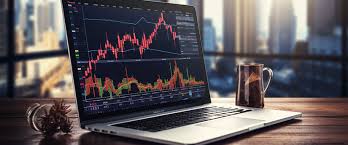
How to Open a Forex Trading Account: A Comprehensive Guide
Forex trading has become a popular avenue for investors to profit from currency fluctuations. If you’re considering entering this dynamic market, your first step will be opening a Forex trading account. This article provides a detailed guide on how to navigate the process successfully, including key considerations, necessary documentation, and tips for selecting the right broker. To help you get started, check out how to open a forex trading account Top LATAM Forex Platforms for suitable brokers in your region.
Understanding Forex Trading
Forex, short for foreign exchange, is the global marketplace for trading national currencies against one another. With a daily trading volume exceeding $6 trillion, Forex is one of the largest and most liquid markets in the world. Traders capitalize on the price fluctuations of currency pairs, buying one currency while selling another.
Why Trade Forex?
Several factors drive individuals to engage in Forex trading, including:
- High Liquidity: The Forex market allows for quick transactions due to its massive trading volume.
- Accessibility: With only a computer and internet connection, anyone can participate in Forex trading.
- 24/5 Trading: The market operates 24 hours a day, five days a week, enabling traders to engage whenever it suits them.
- Leverage: Forex brokers typically offer leverage, allowing traders to control more significant positions than their initial investment.
Step-by-Step Guide to Open a Forex Account
1. Choose a Reliable Forex Broker
The first step in opening a Forex trading account is selecting a broker. Look for a broker that is regulated, reliable, and fits your trading style. Here are key factors to consider:
- Regulation: Ensure the broker is regulated by a reputable authority (e.g., FCA, ASIC, NFA).
- Trading Platform: Evaluate the platform’s user interface, tools, and accessibility.
- Fees and Spreads: Understand the costs involved, including spreads, commissions, and overnight fees.
- Customer Support: Look for brokers with robust customer service to assist you promptly.
2. Complete the Application Form
Once you’ve chosen your broker, the next step is completing the application form. This form will typically require:
- Your name and contact information
- Nationality and date of birth
- Financial background and trading experience
Honesty is critical here because the broker uses this information to assess your profile and offer trading products suitable for your experience level.

3. Verify Your Identity
After submitting your application, you will need to verify your identity to comply with regulatory standards. Common verification documents include:
- A government-issued ID (passport or driver’s license)
- A recent utility bill or bank statement showing your address
Submitting these documents can take a few minutes to several days, depending on the broker’s processes.
4. Fund Your Trading Account
After your account is verified, you can deposit funds to start trading. Most brokers offer various funding options, such as:
- Bank transfers
- Credit/debit cards
- Electronic payment platforms (like PayPal or Skrill)
Be aware of the minimum deposit requirements and any associated fees for each funding method.
5. Choose Your Account Type
Forex brokers often offer different account types. The right choice depends on your trading strategy, capital, and experience. Common types include:
- Standard Accounts: Suitable for experienced traders with larger capital.
- Mini Accounts: Allows trading on a smaller scale, ideal for beginners.
- Managed Accounts: A professional manager trades on your behalf for a fee.
Start Trading
Once your account is funded and you’ve selected the appropriate account type, it’s time to start trading. Here are some essential tips for beginning Forex traders:
- Educate Yourself: Learn the fundamentals of Forex trading, including technical and fundamental analysis.
- Practice with a Demo Account: Many brokers offer demo accounts to practice trading strategies without risking real money.
- Develop a Trading Plan: A well-defined trading plan should include your goals, risk management strategies, and analysis methods.
- Stay Informed: Keep up with economic news and events that might impact the currencies you are trading.
Conclusion
Opening a Forex trading account is a straightforward process that sets the stage for entering a potentially lucrative market. By carefully selecting a reputable broker, understanding the requirements, and preparing yourself with the right knowledge and tools, you can enhance your chances of success in Forex trading. Remember to approach trading with caution, utilize available resources, and continually seek to improve your skills. Happy trading!